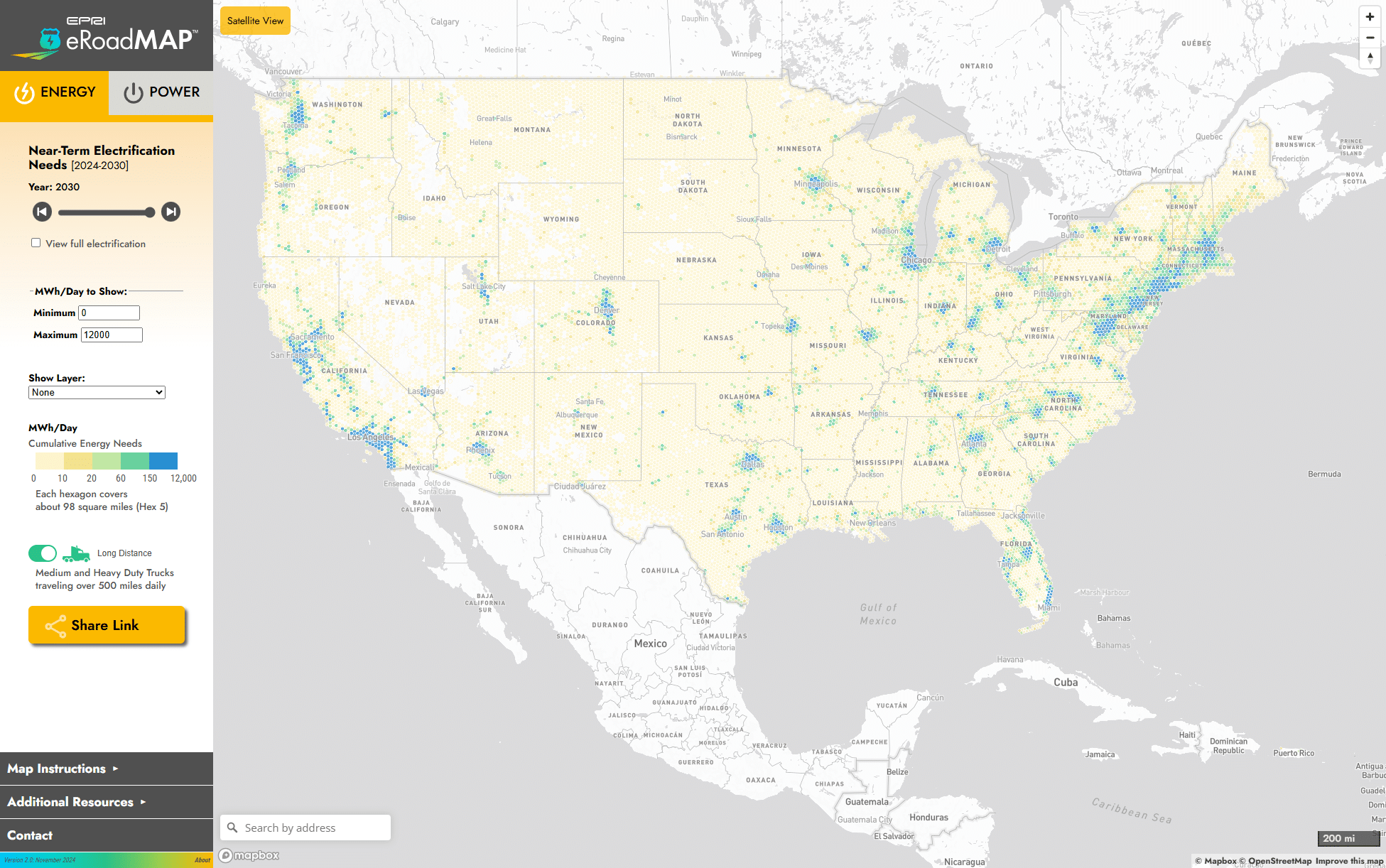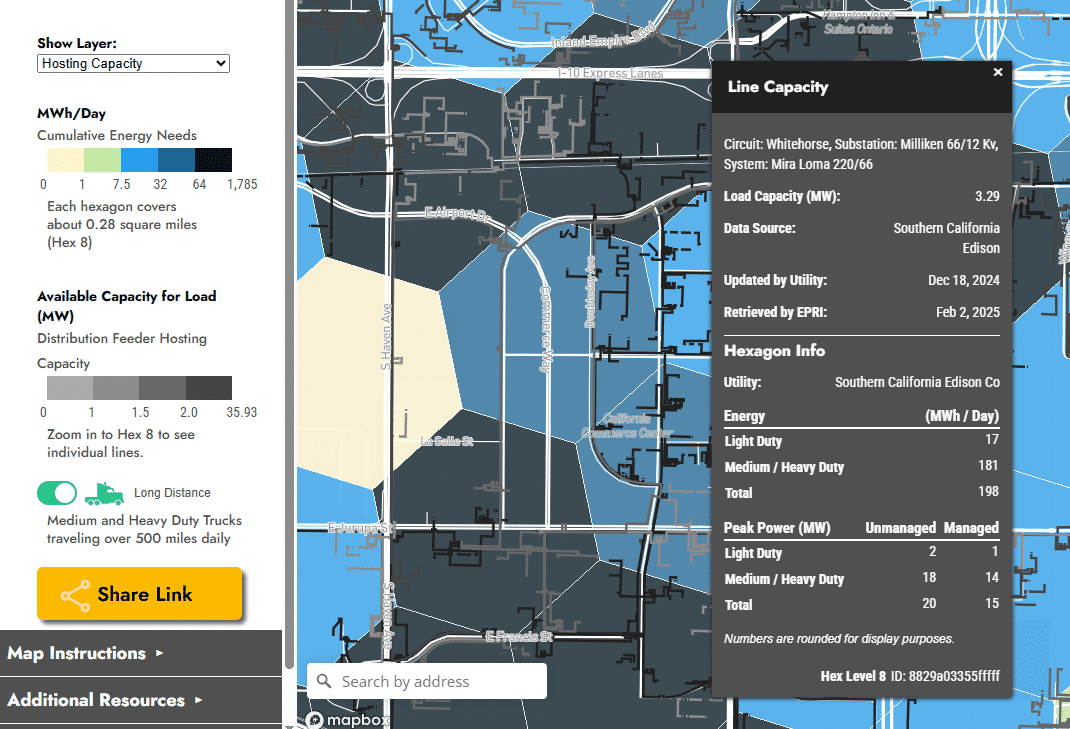
The global shift toward electric vehicles (EVs) is accelerating, with utility companies and transportation planners working to anticipate and meet emerging energy demands.
However, pinpointing exactly where and when EVs will require electricity remains a complex challenge. EPRI combines INRIX’s trip data and sources within its eRoadMAP tool, offering in-depth insight into future energy needs across various U.S. regions and vehicle types.
The Power of eRoadMAP and INRIX Trip Data Integration
What is EPRI’s eRoadMAP Tool?
eRoadMAP is a first-of-its-kind modeling tool developed by EPRI to estimate power and energy requirements for the U.S. by combining EV adoption projections with real-world trip data and large fleet electrification plans. The tool provides:
- Granular energy and power demand forecasts based on conventional vehicle movement patterns,
- Peak power estimates to understand load balancing opportunities, and
- Scalability across different geographic regions and vehicle types.

How INRIX Trip Data Powers eRoadMAP
INRIX Trip Analytics provides granular, anonymized trip data derived from a diverse set of GPS-enabled sources, including commercial fleets, and connected devices. The data captures actual origin-destination patterns, dwell times, trip chains, and vehicle types. This enables a precise understanding of mobility behaviors and travel demand.
By integrating this data with eRoadMAP, planners and utility companies can:
- Pinpoint high-demand charging location opportunities based on real-world travel behaviors,
- Anticipate distribution system needs to prevent grid overloading, and
- Improve investment decisions by targeting infrastructure expansion where it is needed most.
Integrating INRIX Trip Analytics into tools like eRoadMAP transforms static forecasting into dynamic, behavior-driven analysis. By capturing real-world movement patterns, how, when, and where people travel, planners and utilities can more accurately predict local energy demand. This leads to smarter infrastructure investments, from EV charging station placement to distribution grid design, all aligned with actual transportation trends and future shifts.
The Future of Transportation Electrification
As EV adoption accelerates, data-driven forecasting will be essential for a smooth transition. By integrating INRIX Trip Analytics with the eRoadMAP tool, utility companies and transportation planners gain the ability to:
- Develop robust, forward-thinking infrastructure strategies,
- Minimize cost overruns and inefficiencies, and
- Support a sustainable, electrified transportation network
Understanding EV energy demand is crucial. By combining advanced trip data analytics with cutting-edge forecasting tools, we can collectively foster a more efficient and sustainable future for EV adoption. Visit inrix.com/products/trip-analytics/ to explore deeper insights into transportation trends and eRoadMAP.epri.com to see INRIX data at work!




